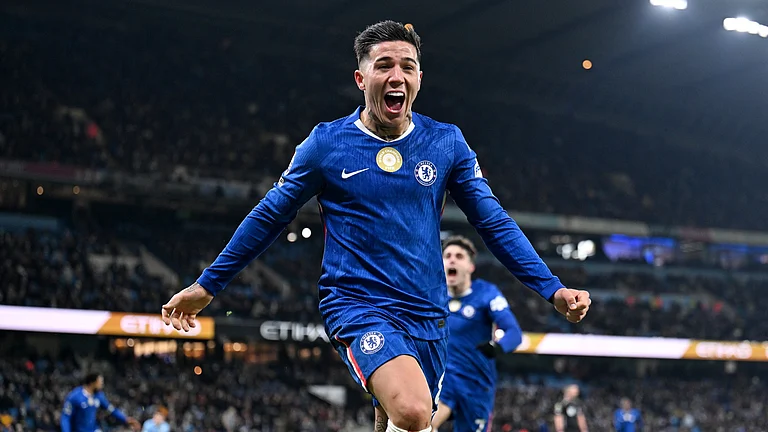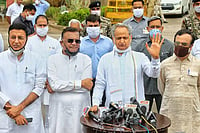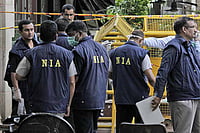Queen Elizabeth II of the United Kingdom of Great Britain and Northern Ireland died on Thursday at her estate in Scotland. She was 96.
The Queen was the longest-reigning British monarch who reigned for 70 years. She was crowned in 1952.
In her long life and reign, the Queen saw numerous armed conflict that changed the course of world history, including the World War II.
Not just did the Queen witness these historical developments, but she was also part of them as the British monarch and as the head of the British Armed Forces. Further, she served in the World War II when she was a princess and heir to her father King George VI.
Moreover, the British Royal Family has had a long association with the British military, with several members serving in the miltiary. Her husband the late Prince Philip, her son Prince Andrew, and grandsons Princes Harry and William served in the military, including in active war zones.
Here are the wars that Queen Elizabeth II witnessed during her life and reign:
World War II (1939-45)
Queen Elizabeth II was 13-years-old when the World War II broke out. As a Princess, she was involved in the War in multiple ways.
While still a minor, she addressed the public over the radio to boost the moral in wartime.
"On October 13, 1940, in response to this mass movement of people, Princess Elizabeth gave her first address from the drawing room of Windsor Castle as part of the BBC’s Children’s Hour in an attempt to boost public morale. She spoke directly to the children who had been separated from their families as part of the evacuation scheme," noted the UK National World War II Museum.
The Queen joined the British military when she turned 18. She joined the Auxiliary Territorial Service (ATS) as a mechanic.
"She started as a second subaltern in the ATS and was later promoted to Junior Commander, the equivalent of Captain," noted the World War II Museum.
The ATS was not a ceremonial unit. Hundreds of women ATS personnel were killed during the War and its personnel were deployed overseas as well.
The Museum noted, "The jobs were dangerous, and during the course of the war, 335 ATS women were killed and many more injured. By June 1945, there were around 200,000 members of the ATS from across the British Empire serving on the home front and in many overseas theaters of war."
Besides the Queen, her future husband Prince Philip also served in the World War II.
The Museum notes: "He attended the Britannia Royal Naval College at Dartmouth in 1939 and served aboard a whole series of ships in the course of the war, including the battleship HMS Ramillies in the Indian Ocean, and battleship HMS Valiant in the Mediterranean Sea. He fought in the action off Cape Matapan in Greece on March 28, 1941, where the Royal Navy destroyed an Italian naval squadron.
"Philip operated a searchlight in the clash and was commended for his “alertness and appreciation of the situation.” He also saw action in Operation Husky, the Allied landing on Sicily in July 1943, served in Pacific as an aide to his uncle Louis, Lord Mountbatten, and finally attended the Japanese surrender on board the USS Missouri (BB-63) on Sept. 2, 1945."
The Korean War (1950-53)
While the American role is well-known in the Korean War, the British also played a prominent role.
The War began before her coronation but went on long after she became the Queen.
"Around 60,000 members of the British armed forces served in Korea, many were National Servicemen," says the UK National Army Museum, noting that over 1,100 personnel were killed and over 2,600 were wounded.
Suez Crisis (1956-57)
Eqypt nationalised the Suez Canal in 1956 and the UK, France, and Israel responded with an invasion of the country.
The Suez Canal is central to trade and transit between the West and East as it reduces the time taken by ships by more than half. CNN reports that a ship from Italy to India would travel 4,400 nautical miles in about nine days via Suez Canal whereas the closest alternatives via the Cape of Good Hope and around Africa would take 10,500 nautical miles in three weeks.
The Seuz Crisis highlighted the declining state of UK in the post-World War II period. The UK-French-Israeli involvement in the War failed under US pressure.
"Under intense pressure, particularly from the US, troops were rapidly withdrawn and replaced by a UN force. Britain’s declining status was highlighted and its Prime Minister Anthony Eden resigned. Egypt was granted ownership and sovereignty of the Suez Canal and it was re-opened in April 1957," says the Imperial War Museums about the outcome of the Suez Crisis.
The Cod Wars (1958, 1972-73, 1975-76)
The Cod Wars were a series of three wars between the UK kand Iceland over the fishing rights in European waters.
The Guardian notes: "On 1 September 1958, Iceland extended its fishing limit from four to 12 nautical miles from the coast. British vessels ignored the official deadline for withdrawal and refused to move outside of the new fishing zone, leading to confrontations with Icelandic crews. Boats were rammed, shots fired and Royal Navy warships were deployed to protect the British trawlers.
"This became known as the first cod war...with disputes continuing as Iceland extended its zone to 50 miles in 1973 and in 1976 a 200-mile limit. Each phase saw an increasing number of ramming and net-cutting incidents."
The Ireland conflict (1968-98)
Ireland was rocked by sectarian conflict for decades, which are termed as the Irish Troubles.
"Unionists who largely identified as Protestant wished to remain part of the United Kingdom, while nationalists who mainly identified as Roman Catholic wanted Northern Ireland to be part of the Republic of Ireland. An estimated 3,600 people were killed and thousands more people were wounded on both sides of the conflict, and shootings, violence and bombings were commonplace," reported The Daily Express.
The Royal Family was directly affected by the Irish conflict as Lord Mountbatten, a cousin to the Queen and the Last Viceroy of India, was killed in a bombing by the terrorist group Irish Republican Army (IRA).
Falklands War (1982)
The Falklands War was fought between the UK and Argentina over the territories of Falkland Islands, South Georgia and the South Sandwich Islands. The UK considers these territories as British Overseas Territories.
"In 1982, President Leopoldo Galtieri of Argentina decided to take control of the islands by force. Argentina had already established an unauthorised but unopposed presence in the South Sandwich Islands in 1976. Now, Argentinian forces occupied the Falkland Islands (2 April) and South Georgia (3 April), a move condemned by the United Nations," notes the Imperial War Museum.
The UK launched a military operation with hundreds of warships and planes and it was the first operation since World War II in which all branches of the British Armed Forces were involved.
By the time Argentina surrendered, 907 lives had been lost, including 649 Argentinian, 255 British and three Falkland Islanders.
Notably, the Queen's son Prince Andrew served in the War as a helicopter pilot.
The Afghanistan War (2001-21)
The United States launched the War on Terror after the 9/11 terrorist attack. The Western world, including the UK, under the leadership of the United States, invaded Afghanistan to overthrow the Taliban regime that had sheltered terrorist group Al Qaeda responsible for 9/11 and several other terrorist attacks in the world. The UK and the West also pursued Al Qaeda and other jihadist organisations.
The UK forces served active combat operations in 2003-14. After 2014, the British forces ended active combat operations but continued training and advisory roles to the Afghan military.
By the time the Western forces withdrew in 2021, a total of 456 British personnel died in Afghanistan.
Notably, the Queen's grandson Prince Harry served two tours of duty in Afghanistan in active operations.
The Iraq Invasion (2003)
The British personnel participated in the 2003 US-led Invasion of Iraq. Though Iraqi ruled Saddam Hussain was overthrown in after a month of fighting, British combat operations ended in 2009 as an insurgency continued in Iraq and the US-led West began a counter-insurgency and nation-building mission.
The reasoning for the invasion was that Saddam's regime had weapons of mass destruction (WMDs) which threatened the West.
The British forces played key roles in Basra, Zubayr, and the march on Baghdad, in addition to special forces operations.
The Russian invasion of Ukraine (2022)
The ongoing Russian invasion of Ukraine is the last of the wars that Queen Elizabeth II witnessed in her long life and reign.
Russian President Vladimir Putin ordered the invasion of Ukraine on February 24. Since then, the Western world has played a key role in helping Ukraine defend against the Russian invaders. The Western aid, including by the United Kingdom, has been key to the Ukrainians' defence of their country.
Former UK Prime Minister Boris Johnson remains the most high-profile world leader to visit Ukraine's capital Kyiv to boost the Ukrainian morale and express support to the Ukrainian war efforts.
While the Queen and the Royal Family remains apolitical, so direct comments on any war is not expected, the Queen did appear to refer to the Russian invasion in her message to Ukraine on the country's Independence Day. She referred to the year as "the most challenging" in her message.
"In this most challenging year, I hope that today will be a time for the Ukrainian people, both in Ukraine and around the world, to celebrate their culture, history and identity. May we look to better times in the future," said the Queen in her message, as per People magazine.


























